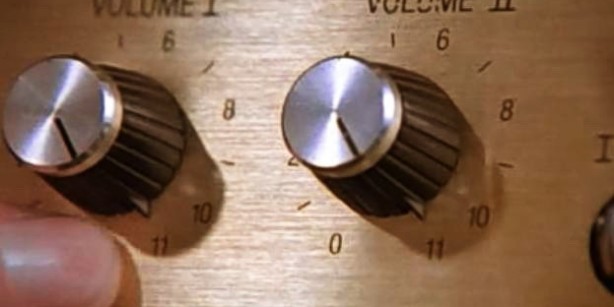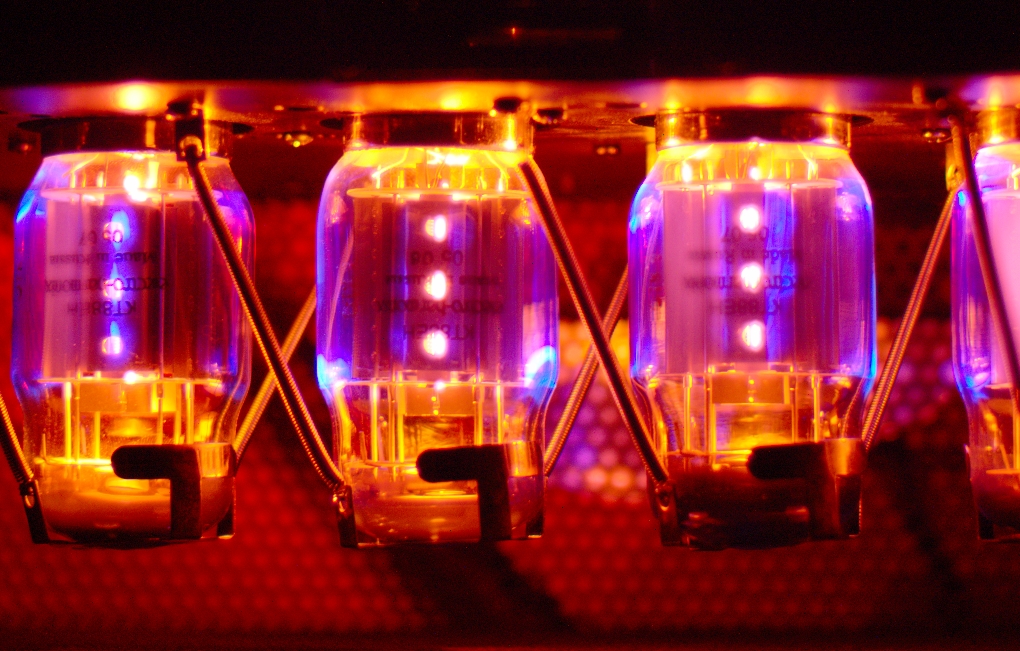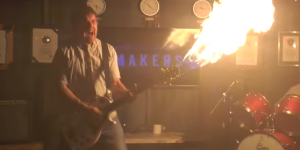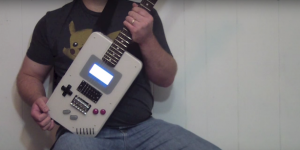 Tech
Tech
A brief history of guitar distortion
by Greg Bouchard
August 28, 2014
Using equipment incorrectly made one of music's most enduring sounds.
Most of us picked up a guitar when we were young, eager to shred like our favourite guitarists, only to have a very different sound come out when our fingers hit the strings. It wasn’t just that we couldn’t play – that was obvious – but the tone was clean, tinny, and nothing like what we heard on alternative rock radio or whatever was cool at the time. It isn’t obvious or intuitive how to make guitar distortion just from plugging in, which is why it’s amazing that players not only managed to do it in the first place, but turn it into an entire approach to an instrument. This is why it’s fun looking back in awe over the guitarists who have pushed the boundaries of music and electronics to bring us this wonderful sound – even more so since it shouldn’t have ever happened.
Simply put, distortion is the sound of a guitar having the edges of its sound waves compressed. Originally this happened when musicians would turn up the volume on their amps to the point where there was too much electricity flowing through its circuits and the original wave came out differently. Since then, guitarists and audio techs have developed numerous other ways of creating distortion, like changing a signal before it reaches the amp (think guitar pedals) or after it has passed through the power section of an amp (think the overdrive knob on the amp you had as a teenager).
Before the invention of transistors and solid state circuits, which is what we’re used to seeing inside of electronics today, guitar amplifiers contained vacuum tubes. Looking a bit like lightbulbs, vacuum tubes are literally glass tubes that control a current by creating a vacuum around a pair of electrodes. When too much current goes through the tube, it reaches its maximum capacity and spits a compressed version of what came in. The compressed signal is what we hear on the other end when we listen to distorted guitar.

This is why the pioneers of guitar distortion were simply badass players who decided to turn up their amps really loudly. Imagine a blues player trying to cut through the noise of a loud bar or dance hall, cranking up the volume, and discovering a whole other thick, warm, dirty sound. That’s basically all it took, and where there was loud music, there was usually some distortion. But in the studio, recording engineers considered it an error and kept guitars clean and clear. This started changing with a handful of rock n’ roll, soul, and blues songs in the late 40s and early 50s. Take “Rocket 88” by Jackie Brenston & His Delta Cats (1951) or Howlin’s Wolf’s recording of “How Many More Years” (1952).
These songs sound pretty tame by today’s standards, but when compared to what else was on the radio in the early 1950s, it was basically the devil’s music. Possibly the most snarling song of the the decade was “Rumble” by Link Wray & His Ray Men – a twelve-bar-blues instrumental where Wray used a cranked up amp and tremolo together, pushing each note to the breaking point. The song was so rough sounding that radio stations around the U.S. banned it fearing it would incite gang fights.
Pretty quickly, musicians started going to great lengths to create the best distortion tones, sometimes modifying or deliberately breaking parts of their amps in search of that perfect dirty sound. One of the most famous examples – and arguably the first international hit song that used heavy distortion – was “You Really Got Me” by The Kinks (1962), for which guitarist Dave Davies slashed holes in his speaker cones with a razor.
The funny thing about distortion is that it shouldn’t, by any normal standards, actually sound good. Until this point, sound engineers had spent decades trying to avoid distortion and produce perfectly clear, unaltered waves on record. But they didn’t consider that distorted signals, when used properly, can actually create beautiful overtones and a warm sound that helps to fill a sonic space and adds to the expressiveness of an instrument. Tubes make especially nice tones from overdriven signals because they keep rounded waves and crests, unlike solid state distortion, which cuts off the signal and flattens it. This is why the vast majority of guitarists still use tube amps today, and why a distortion on a solid-state amp or a pedal by itself can easily sound thin and cold.
This is, of course, not always the case, since some of the most famous distortion tones have come from pedals. Starting in the early 1960s, guitarists and music techs started devising ways of manipulating their guitar signals. Out of this came the fuzz box, which distorts a sound wave to the point of being virtually square, creating a big, rich, warm tone. One of first bands to use one was The Ventures for their song “The 2000 Pound Bee” (1962). While their fuzz box was a relatively crude piece of electronics put together by their friend, Orville “Red” Rhodes, a commercial model called the Maestro Fuzztone FZ-1 came out that year. This was the predecessor to the most famous, and still most coveted, fuzz box of all: the Big Muff (1968).
It was with a combination of overdriven amps and pedals like the Big Muff and (later) the Tube Screamer that guitarists used to push distortion to new levels, allowing for heavy metal, shoegaze, grunge, and everything in between. Take Jimi Hendrix, famous for playing through two 100-watt Marshall stacks, turned all the way up, with a fuzz pedal and wah wah. Or Jimmy Page, who had enough gear to launch a spaceship, but got distortion from trusty fuzz boxes and Marshall and Hiwatt amps.
During the 1980s, a wide variety of metal and rock guitarists pushed distortion to the edges of sonic possibility and, occasionally, taste. Eddie Van Halen was known for hot-wiring his amps, pedals, and guitars to get the hottest signal possible – in ways that hordes of artists tried their hardest to copy. Then there was Metallica, whose search for the perfect tone led them to make “coffins” for their speaker cabinets – basically soundproof boxes with a speaker and a microphone inside – in order to keep any sound flaws out.
Sometimes things got a little too perfect and lost the reckless spirit that produced distortion in the first place. It’s no wonder that a lot of guitarists from the early 90s onward have embraced sludge and imperfection, whether it’s Kurt Cobain’s sloppy riffing or Jack White’s fanatical use of vintage gear.
Whatever your taste, it’s important to remember that one of the most important ways of playing any musical instrument was originally a mistake. It took people actively, and unrepentantly, using their equipment the wrong way to make it happen. It makes you wonder: what other instruments are out there, waiting to get broken?
Tags: Tech, amp distortion, distortion, fuzz box, guitar, history, pedals, tube amps, videos





